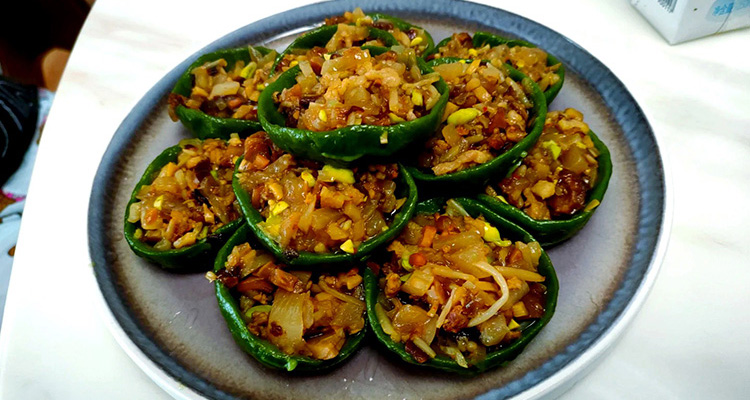Qianshan Rice Cup Cakes: Traditional Steamed Rice Cakes of Jiangxi Cuisine
When the lid of the steamer is lifted, the aroma of rice mingled with savory fillings fills the air. Each rice cake, shaped like an ancient oil lamp, is neatly arranged in the steamer, with the deep green mugwort skin glistening enticingly — this is Qianshan Rice Cup Cakes, a traditional treat that seems to breathe! Gently pick one up with chopsticks; through the translucent skin, the filling can be seen faintly. Bite into it, and the soft, chewy cake blends perfectly with the savory filling, evoking the flavors of the Xinjiang River throughout the seasons.
1. Origin and History
Qianshan Rice Cup Cakes originated in Qianshan County, Jiangxi, with a history of over 600 years. It is said to have started during the Ming Dynasty when locals made lamp-shaped rice cakes from rice slurry to honor an honest official in a ritual. Over time, it evolved into a popular snack and is now one of Qianshan’s most representative traditional foods, serving as a key example of Jiangxi dim sum.
2. Cultural Significance
For Qianshan residents, these rice cakes symbolize festivals and celebrations. During traditional holidays like Qingming and Dragon Boat Festival, every household makes Qianshan Rice Cup Cakes. This snack carries the local culture of paying tribute to ancestors and remains a strong nostalgic memory for those who have left home.
3. Ingredients and Features
High-quality local rice and glutinous rice from Qianshan are mixed in a specific ratio, with fresh mugwort juice added for a unique fragrance. Fillings include shiitake mushrooms, dried tofu, bamboo shoots, and minced meat, with locally made fermented soybean paste as the key ingredient to achieve its distinct flavor.
4. Preparation Process
Soak the rice, grind it into slurry, and mix with mugwort juice to form the cake skin. Cook the filling, let it cool, and wrap it in the rice cake skin, shaping it into a lamp form. Steam for 15 minutes. Maintaining the perfect lamp shape is the key test of craftsmanship.

5. Taste and Texture
The rice cake skin is soft and chewy, carrying the fresh aroma of mugwort. The filling is savory and flavorful, with multiple textures blending in each bite. The first taste is the fragrant rice skin, followed by the savory filling, and finally, the unique flavor of fermented soybean paste lingers on the palate.
6. How to Eat
The most authentic way is to eat them hot, enjoying the fresh aroma straight from the steamer. Locals like to pair them with a bowl of Xinjiang-style soft tofu to balance the richness. Some prefer dipping the cakes in locally made chili sauce for extra flavor.
7. Where to Try
Taste authentic versions at Old Street Rice Cake Shop (RMB 15–25 per person) or Xinjiang Traditional Snacks (RMB 12–20 per person). The best time to visit is early morning or evening when the cakes are freshly made. When ordering, you can say, “A steamer of Rice Cup Cakes, please.”
8. Traveler Tips
In English, the dish is called “Qianshan Rice Cup Cakes.” Be careful of hot fillings and take small bites. For richer flavors, ask for extra fillings. The ideal time to eat is within ten minutes after steaming.
9. Home Version Simplified
At home, glutinous rice flour can replace ground rice slurry, with spinach juice added for color. Fillings can use shiitake mushrooms, minced meat, or other common ingredients. While it won’t have Qianshan’s unique local flavor, mastering the softness of the rice skin allows you to enjoy this traditional treat at home.
Explore the old streets of Qianshan and discover this breathing traditional delicacy! When the mugwort fragrance wafts in the air and the soft rice skin melts in your mouth, you’ll understand why this simple snack has been a cherished memory for generations. In this ancient town, Qianshan Rice Cup Cakes let you experience the authentic flavors of northeastern Jiangxi.


